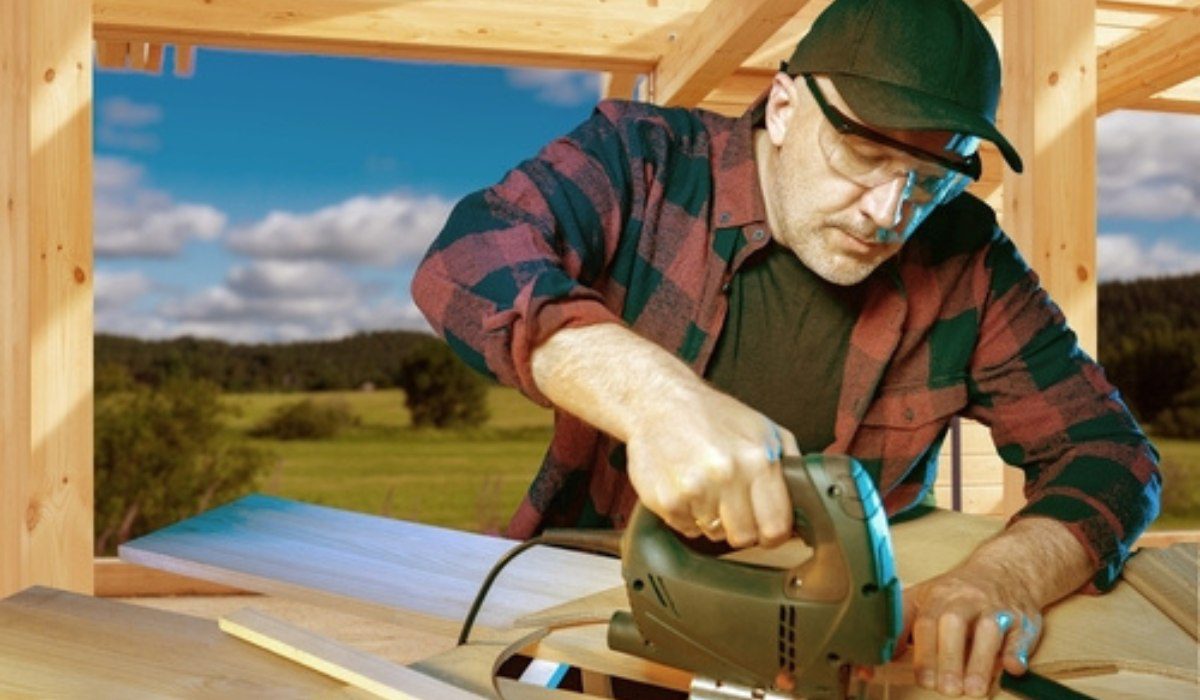Be it cutting wood for a DIY project or for professional projects, a jigsaw is a wonderful tool that makes the tough and tiresome task of cutting wood much easier. Not only does it make the process quicker and smoother, but with the right techniques, it gives the wood a professional finish. If you are someone who likes to be creative, learning how to use a jigsaw can be a game changer as you can complete any DIY project without having to be a professional to cut wood for you.

Source: Pinterest (Woodsmith)
How to use a jigsaw?
Safety first
Before starting with the process, it is important for you to ensure your safety first. Make sure you wear goggles to prevent tiny wood splinters or dust particles from entering your eyes. Besides this, make sure you wear a mask because inhaling dust can damage your lungs, and always wear ear protection because jigsaws create a lot of noise.
Another important thing to do is to secure your hair if you have long hair, as it can get caught in the tool.
How to choose the right blade?
Choosing the right blade is crucial, and it depends on your project. Generally, jigsaw blades have various shapes and sizes, but selecting the perfect jigsaw blade depends on the material that you’re going to cut. For example, for wood, it is best to use a medium-tooth blade, and for plywood, you can use a fine-tooth blade as it provides sharper cuts, while for thicker materials, you can use a coarse-tooth blade.

Source: Pinterest
Adjusting the blade
The first step is to adjust the blade in the jigsaw. Unplug the jigsaw and insert the blade as its teeth face downwards, and make sure it is secure in its position. The blade position also depends on the type of cut you wish to make; for example, for a straight cut, the blade should be positioned at a 90-degree angle with the base.
The appropriate speed
You can also adjust the speed in a jigsaw. If you are working on detailed cuts, set the speed to low, and if you are working on simple, straighter cuts, you can set a higher speed.
Secure the material that you are going to cut
Now make sure that your workpiece is properly secured to a surface so it doesn’t move as you cut it with the jigsaw. This ensures a straighter and much more accurate cut.
Start the cutting process
Hold the grip with one hand and the jigsaw handle with the other and start cutting along the marked lines. It is good to mark lines before starting the cutting process as it ensures accuracy and precision and reduces the risk of mistakes. Slowly push the blade into the material and let the jigsaw do its job.
Different types of cuts
There are several types of cuts:
Straight cuts: As the name suggests, these are straight cuts that you can achieve by keeping the base of the jigsaw flush against the guide and making a slow and precise movement across the material.
Curved cuts: For these types of cuts, the first step is to drill a large hole to fit the jigsaw blade inside the material and then insert the blade inside this hole and cut along the edge to achieve a curved cut. It is important to be very slow and steady in this process.
Bevel cuts: Bevel cuts are slanted cuts, and some jigsaws have a setting where you can set the base’s bevel angle to get the perfect cut.
The corners
Once you reach the corner, slightly lift the tool and turn it and then continue the cutting process as you did earlier. Lifting the tool up prevents the material from getting damaged.
Some finishing touches
Once you are done with the process, wait for the blade to stop completely before putting it down on any surface. You can also sand the edges to achieve a more finished look. In the case of wood, it is advised to sand the surface to smooth out the splinters, as they can harm you later.
FAQs
Can I cut metal with a jigsaw?
Yes, you can cut metal with a jigsaw. Make sure you use a jigsaw with coarser teeth.
Is it necessary to adjust the speed settings before every cut?
Yes, you should adjust the speed settings before making cuts. For example, for cuts that are more detailed and intricate, you need to set the jigsaw at a slower speed, as a higher speed won’t get you the desired results or may even end up damaging your project.
When should I replace my jigsaw blade?
If you notice that the blade is damaged or broken or has started making rougher cuts, you should replace it with a newer one.
My jigsaw vibrates a lot when I use it; how should I fix it?
Generally, jigsaws vibrate a little, but if they vibrate and shake a lot, then you should consider replacing the blade or checking for other technical issues.
Should I apply excessive pressure while cutting wood with a jigsaw?
No, avoid applying a lot of pressure as it can damage the material. Let the jigsaw do its job while you evenly apply pressure.
How do I maintain a jigsaw for optimal performance?
Keep the jigsaw clean and keep lubricating any moving parts to keep it in ship shape.
What is the best technique for cutting circles with a jigsaw?
To cut circles with a jigsaw, one has to first drill a pilot hole in the centre of the circle. Insert the jigsaw blade into the hole and cut along the circumference while keeping the material steady.
| Got any questions or point of view on our article? We would love to hear from you. Write to our Editor-in-Chief Jhumur Ghosh at jhumur.ghosh1@housing.com |






